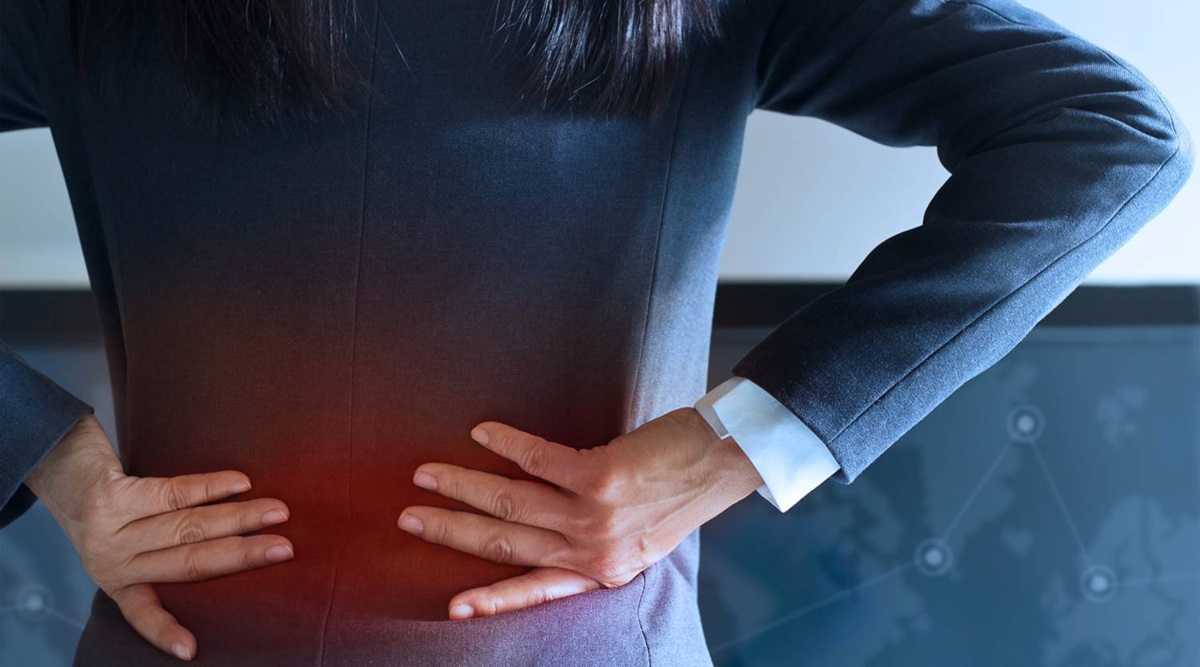 While advances in spinal treatments, like pain blocks, are middle path regimes that may successfully solve slipped disc problems, spine specialists strongly advise ‘correct posture’ to prevent backaches. (Representational Image)
While advances in spinal treatments, like pain blocks, are middle path regimes that may successfully solve slipped disc problems, spine specialists strongly advise ‘correct posture’ to prevent backaches. (Representational Image)Twenty-nine-year-old Aniket (name changed), a cyclist working in the IT sector, had been experiencing lower back pain for two to three months. He consulted search engines for over-the-counter medicines, but found no relief. At Sancheti hospital, MRI images showed a slipped disc. A pain block was able to relieve the problem.
While advances in spinal treatments, like pain blocks, are middle path regimes that may successfully solve slipped disc problems, spine specialists strongly advise ‘correct posture’ to prevent backaches.
This year’s theme for World Spine Day, celebrated on October 16, is ‘Back on Track’, which is fitting, especially as working from home during the Covid-19 lockdown has led to an increase in backaches and other spine-related problems.
According to Dr Shailesh Hadgaonkar, spine specialist at Sancheti hospital, about 85 per cent adults experience back pain in their lifetime. The most common causes of this include degenerative disc disease, herniated disc, spinal canal stenosis, fractures, and other causes related to the body’s form, support, stabilising and movement mechanism.
“The Covid-19 pandemic and subsequent lockdown restrictions have impacted people’s ability to stay active and mobile. There has been a rise in patients with back-related problems, as work from home has led to increased inactivity, coupled with an already-existing sedentary lifestyle. The lack of ergonomic chairs, which leads to poor posture, is the main cause of backache. Additional factors include poor exposure to sunlight, poor sleeping hours, and a lack of proper diet. The lockdown has affected these factors as well, especially among college students, IT individuals, and sports individuals, whose routine activity and schedules have been disturbed,” Dr Hadgaonkar said.
Dr Nirali Mehta, orthopaedic resident doctor, said most young patients that visit the out-patient department provide a history of poor posture. A bent sitting position and crouching of the back and neck weakens the muscles of that area, which then don’t activate properly when needed. Dr Mehta added that the ears, shoulders and hips should be aligned, and the head should not stick out from one’s torso, or be tilted upwards or downwards.
This year’s theme, ‘Back on Track’, has highlighted the importance of exercise, posture, movement, and self-care to ensure a health spine, she added.
Prolonged bed rest leads to loss of muscle strength and causes more harm than gain. Yoga, stretching, brisk-walking and even using a hula hoop can keep one active, Dr Hadgaonkar said, adding that one must improve their diet and eat well. “However, medical attention should be sought if there are symptoms like weakness in legs, incontinence, pain while waking up, among others,” he said.
“Children have been the most affected due to the lockdown when it comes to the health of the spine. Online classes have caused problems relating to the cervical spine and neck muscles. In their correct position, neck muscles are designed to support the weight of the head, of about 5 kgs. For every inch the head drops forward, this weight increases significantly. Looking down at a mobile phone may put around 27 kg of weight on the neck, which, with lack of support to the arms as well as repetitive movement of the fingers, can cause problems to the cervical spine. It may increase weight transition to multiple folds – this may be 15-20 kg of force on the neck, depending on the angle. This sustained posture can injure the cervical and lumbar spine structure, as well as ligaments,” said Dr Pravin Survashe, consultant-neurosurgeon, Columbia Asian hospital.
📣 The Indian Express is now on Telegram. Click here to join our channel (@indianexpress) and stay updated with the latest headlines
For all the latest India News, download Indian Express App.